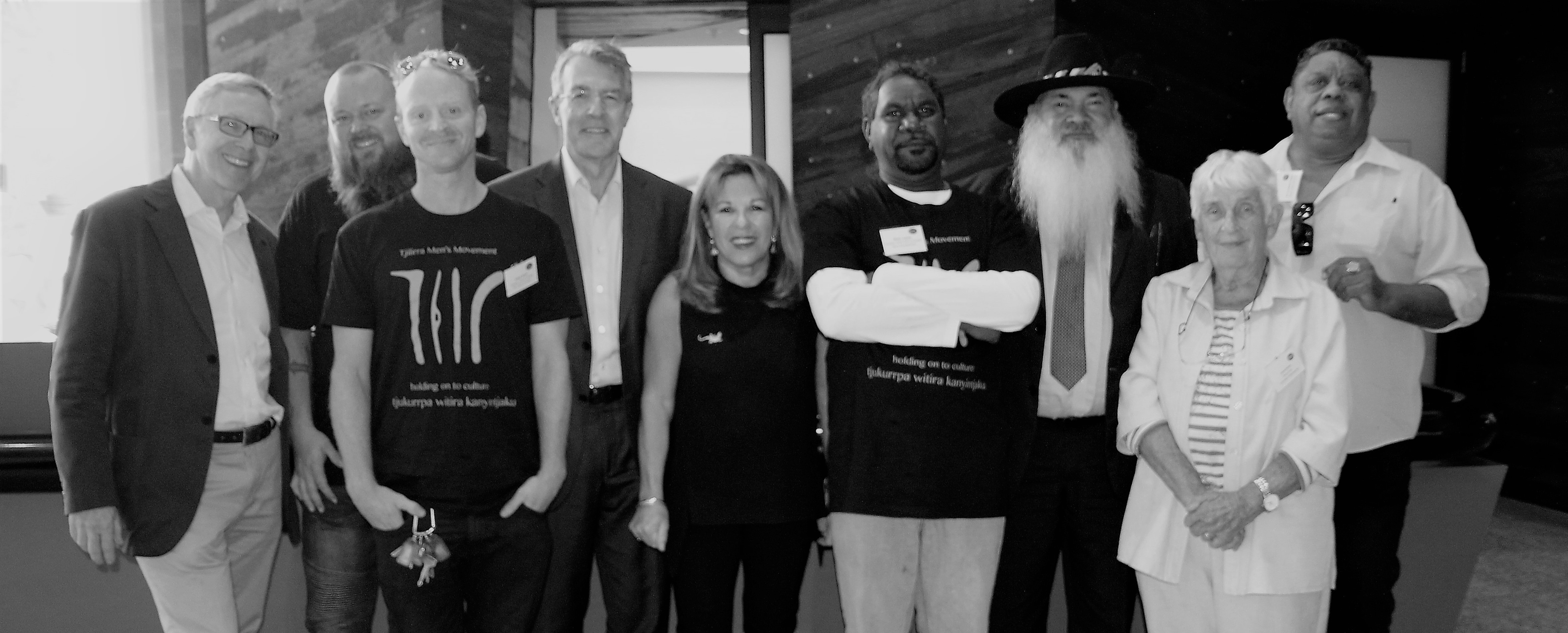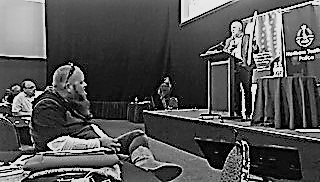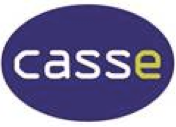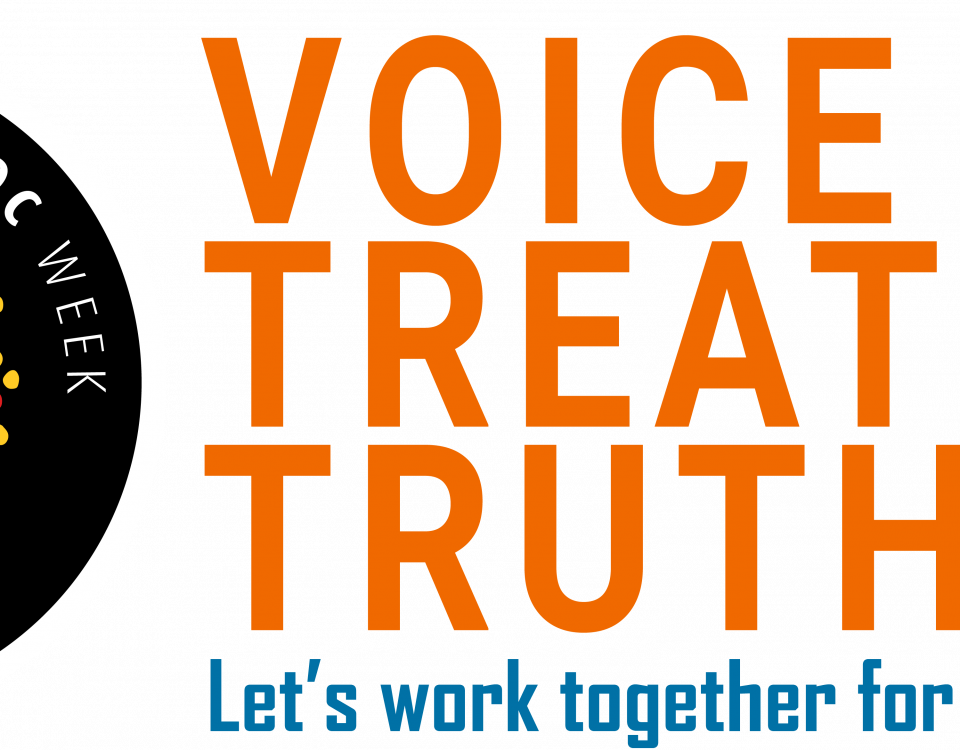
This is a historic and potentially transformative time
May 26, 2017
Reflections
June 16, 2017Discussion and debate about constitutional recognition and the outcome of last week’s Uluru convention of hundreds of Aboriginal community leaders will continue to build as Australia decides whether or not to have a referendum, and what the referendum will be asking. The following article, published in ‘The Age‘, provides some really useful explanations and background information.
Explainer: all the questions you were too afraid to ask about Indigenous constitutional recognition
By Fergus Hunter, published in ‘The Age‘, 31 May 2017
Australia is on the verge of taking big, historic steps towards reconciliation with Indigenous people. But there are some potentially contentious and confusing elements. Here’s what it all means.
What did the Uluru convention call for?
Hundreds of Aboriginal community leaders met at Uluru in late May to find common ground on a way forward. This capped off a dozen regional meetings around the country.
They then released a “Statement from the Heart”, which called for:
- “Substantive constitutional change and structural reform”, rejecting minimalist and symbolic recognition of Aboriginal and Torres Strait Islanders in the constitution
- A constitutionally enshrined “First Nations Voice”, which would sit separately to the Parliament but seek to influence and advise government policy affecting Indigenous people
- A pathway to treaties between Aboriginal people and the government. This would be overseen by a “Makarrata Commission”, which would also guide a process of truth-telling about the treatment of Indigenous people.
What is constitutional recognition?
Broadly, it is the formal acknowledgement of continuous occupation of Australia by
constitutional recognition
people for 50,000 years or more before European colonisation.
Indigenous people are largely rejecting such minimalist change, instead urging substantive action. Advocates of a First Nations Voice contend it is the form of recognition they want.
Advocates for significant change argue it is the only thing Aboriginal people support and the only thing worth doing. Others contend that any change should be minimal if it is to gain the support of the Australian public.
The constitution is the foundation document that underpins all laws made by the Australian government.
What would a First Nations Voice look like?
The exact form of the proposed Indigenous representative body is still to be decided.
It would likely sit separate to the Parliament and not have veto powers over legislation, but offer advice to governments.
Cape York leader Noel Pearson has suggested it could be made up of delegates elected from tribal groups across the country. He favours broad language in the constitution enshrining such a body but leaving the details to the Parliament.
University of New South Wales law professor and Cobble Cobble woman Megan Davis cites international examples to argue structural representation of Indigenous people results in better long-term outcomes in health, education and employment.
What is a treaty?
Treaties are legal agreements between Indigenous groups and governments that can formally recognise sovereignty over land, outline reparations and settlements, establish rules about coexistence and formalise the provision of services like education and health.
An agreement signed between the Western Australian government and the 30,000-strong Noongar people is considered by many to be a treaty. The Victorian and South Australian state governments are in the process of striking treaties with Aboriginal groups.
Australia is the only Commonwealth country that does not have a treaty with its Indigenous citizens.
It’s important to note that treaties and constitutional recognition can co-exist. Some experts have actually observed that constitutional change is required for treaties to be viable.
What would a Makarrata Commission do?
“Makarrata” is a Yolngu word that means the coming together after a struggle, facing up to past wrongs and committing to peaceful relations.
In overseeing treaties between Aboriginal people and government, a Makarrata Commission would seek to perform the role of a truth and reconciliation commission. These have been conducted in South Africa and Canada as part of healing processes.
What other proposals do people want addressed in a referendum?
- Removing or amending the race power contained in section 51 of the constitution, which empowers the government to make policy for a specific racial group. Experts have noted that the wording allows this power to be used to the detriment of a group
- Removing a power that allow governments to disqualify people from voting based on their race
- The addition of a prohibition against racial discrimination (though this did not win support at Uluru because it would be staunchly opposed by constitutional conservatives and free speech advocates).
What is the process from here?
A full report will now be finalised by the nonpartisan Referendum Council advisory group and delivered to the Parliament, which will then decide how to proceed. This will be handed over on June 30, after which the council will be dissolved.
Prime Minister Malcolm Turnbull and Opposition Leader Bill Shorten have maintained a bipartisan approach, although Mr Shorten has indicated more openness to bold change, including a treaty. Mr Turnbull has expressed caution, pointing to the low success rate for referendums.
This council’s report will take into account a 2011 expert panel report, 2015 findings from a bipartisan parliamentary committee and the outcomes of the Uluru convention.
What did the 1967 referendum achieve?
Australia recently marked the 50th anniversary of the 1967 referendum, which removed two provisions in the constitution: one that prevented Aboriginal people from being counted in the Australian population; the other that excluded Aboriginal people from the Commonwealth’s power to make special laws for the people of any race.
Who are the some of the organisations involved here?
Recognise – The official, government-funded campaign founded in 2012 to rally public support for constitutional change. It has been criticised as unrepresentative by Aboriginal figures
Referendum Council – A bipartisan advisory body established in 2015 to inform the progress towards a referendum. It is chaired by respected Aboriginal leader Pat Anderson and high-profile lawyer Mark Leibler
National Congress of Australia’s First Peoples – A non-government, representative body for Indigenous people
Reconciliation Australia – Non-government organisation established in 2001. It oversees Recognise





